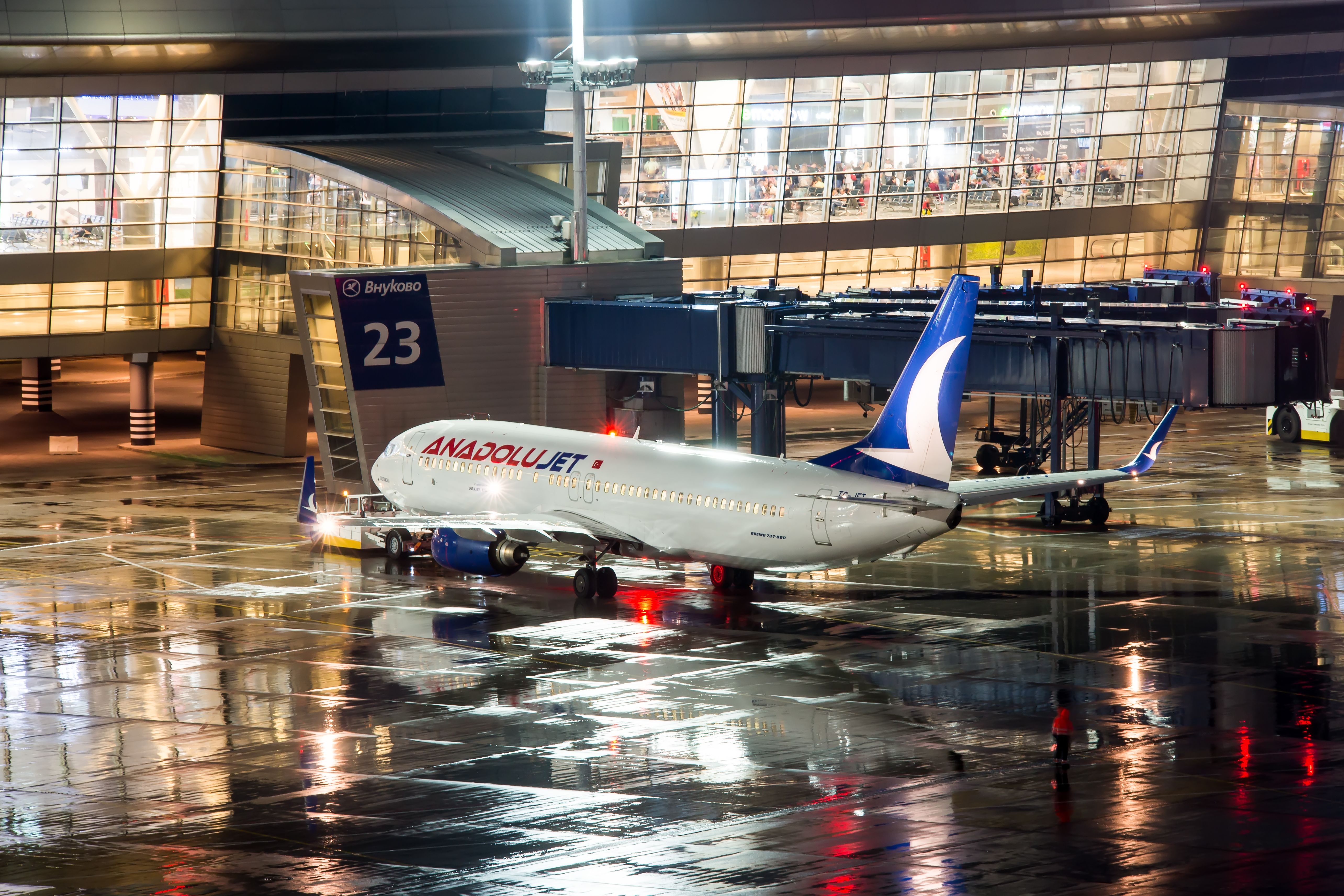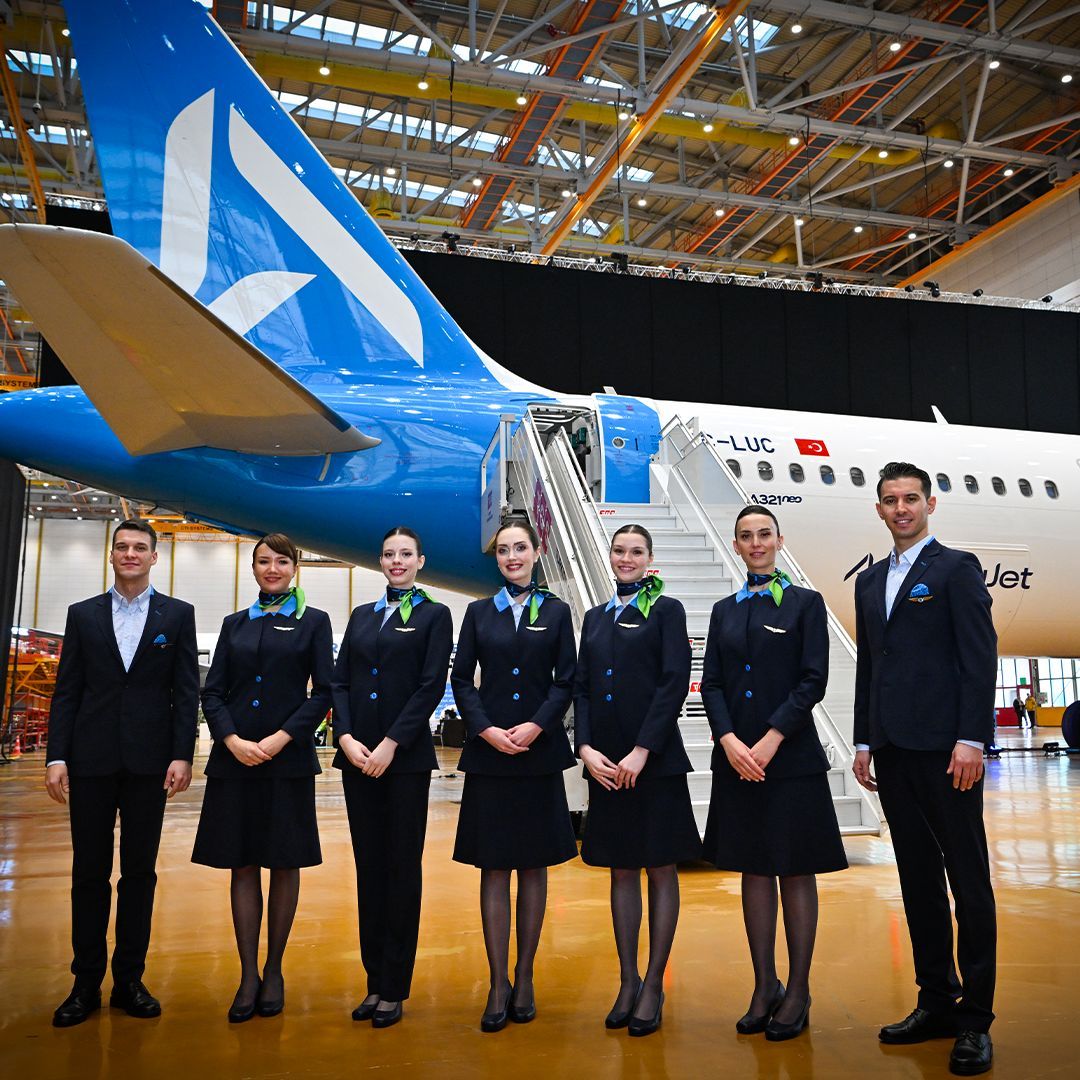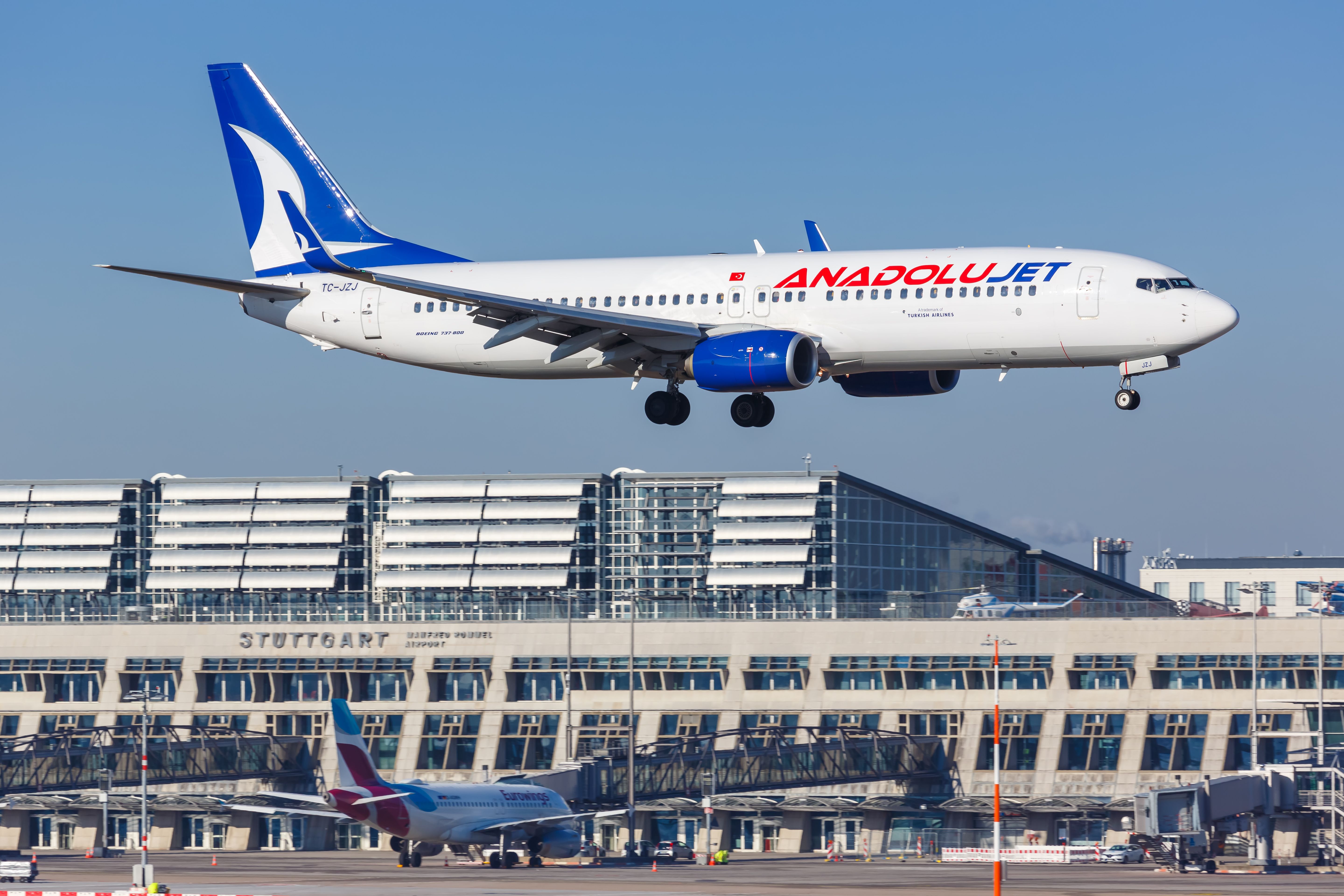Summary
- Control problems force Ajet’s Boeing 737-800 to return to Moscow mid-flight after climbing issues.
- Ajet, Turkish Airlines’ sub-brand, operates with a fleet of 80 narrowbodies and 14 on order.
- With over 11,000 flights scheduled this month, Ajet has a busy network covering 93 destinations.
Yesterday, a Boeing 737-800 operated by Ajet on behalf of Turkish Airlines was forced to return to Moscow after pilots reported a flight control problem.
Control problems lead to diversion
According to the avherald, yesterday, an Ajet Boeing 737-800 was forced to return to Moscow after stopping its climb at 26,000 feet. The aircraft, operated by Ajet on behalf of Turkish Airlines, departed Moscow’s Vnukovo International Airport (VKO) at 02:09. Bound for Antalya, Turkey, the plane stopped its climb because of problems with its flight controls. The avherald reports that after burning fuel for over two hours, the plane landed at VKO.
Data from flightradar24 shows that the plane was on the ground in Moscow until 07:07, nearly six hours after the scheduled departure time of the flight. The plane touched down in Antalya at 12:03. Simple Flying contacted the airline for comment but did not receive a reply at the time of publication.
Who is Ajet?
Ajet is a sub-brand of Turkish Airlines, originally called AnadoluJet and launched in 2008. In March of this year, Turkish rebranded the subsidiary and called it Ajet. By the end of the month, operations shifted fully to operate under the new name. Turkish Airlines published the following statement,
After March 31, 2024, flights departing from and arriving to Austria, Azerbaijan, Belgium, Bosnia and Herzegovina, Denmark, France, Georgia, Germany (Berlin (BER), Cologne, Dusseldorf, Frankfurt, Hannover, Hamburg, Munich, Stuttgart), Iraq (Baghdad, Erbil), Netherlands, UAE (Dubai, Sharjah), United Kingdom (London (STN)), Sweden, Switzerland, Italy, Kyrgyzstan, TRNC, Kosovo, North Macedonia, Lebanon, Hungary, Serbia and passengers registered on all domestic AnadoluJet flights will be transferred to AJet flights.
According to data from Cirium, an aviation analytics firm, Ajet has 11,638 roundtrip flights scheduled this month with nearly 1.8 million seats available. The airline’s busiest route is between Istanbul and Antalya, with up to ten daily roundtrip flights. The flight between the two cities is just 287 miles and is one of several routes in the network under 300 miles.
The longest route in Ajet’s network is from Ankara’s Esenboga Airport to Manas International Airport in Kyrgyzstan at 2,144 miles. Two aircraft types are deployed on the route, Boeing 737s and Airbus A321. The shortest route the airline flies is just 161 miles from Adana, Turkey to Ercan, Cyprus. This summer, Ajet will fly to 93 destinations in 44 countries.

Related
Watch: AnadoluJet Becomes AJet In Turkish Airlines Paint Shop
Ajet’s fleet
According to ch-aviation, Ajet has 80 planes in its fleet and another 14 on order, all narrowbodies. Fleet data shows that all but six aircraft, Boeing 737-800s, are wet-leases. Just over half of the planes Ajet operates are Boeing aircraft, broken down by nine 737-8s (MAX 8s) and 36 737-800s. On the Airbus side, Ajet operates four planes from the A320 family; the A320ceo, A320neo, A321ceo, and A321neo.
Photo: Markus Mainka | Shutterstock
The youngest aircraft in the fleet are the Airbus A320neos and A321neos, with average ages of 1.7 and 1.4, years, respectively. There are four A320neos, 3 A321neos, six A320 ceos, and 12 A321ceos. Ajet is expecting a further 12 MAX 8s.



